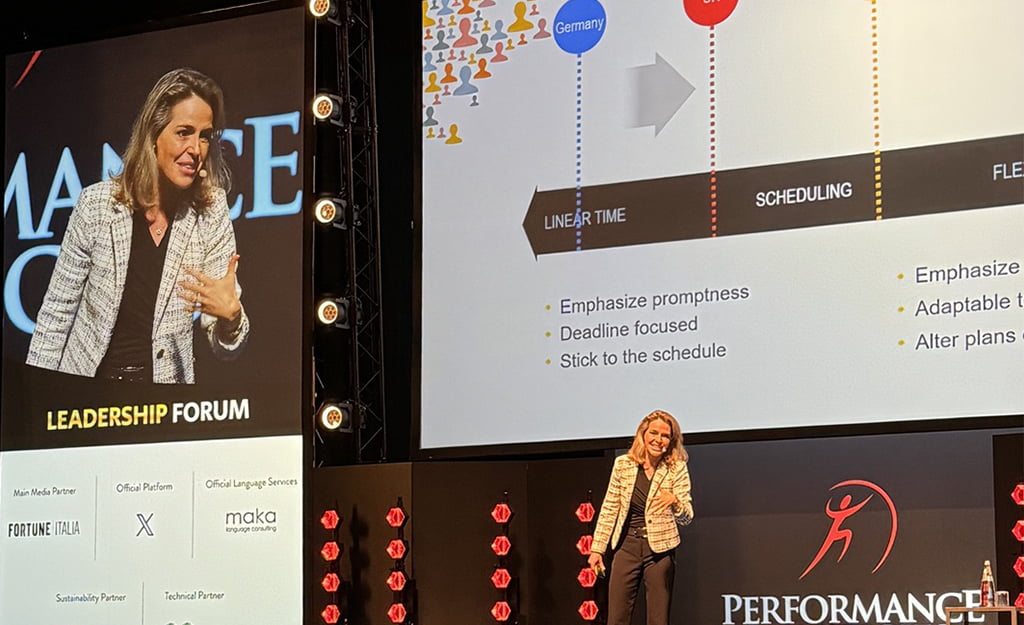
Culture is more than country deep. Intercultural communication goes beyond words and languages. If you want to be successful working across cultures it is important to be aware of the different cultural dimensions that make us act or react as we do.
Imagine a team meeting between German and French colleagues. One expects a detailed recap of the meeting whereas the other moves onto the next thing.
This common scenario is one of many that Erin Meyer, a renowned expert on intercultural communication and professor at INSEAD, has studied in depth. Author of The Culture Map and co-author of No Rules Rules with Netflix CEO Reed Hastings, Meyer has published extensively in Harvard Business Review and Forbes, becoming a trusted authority on bridging cultural gaps in global business.
According to Meyer, effective intercultural communication goes beyond words. It requires an awareness that both verbal and non-verbal cues vary widely between cultures. The more we tailor our approach based on these differences, the more successful our communication will be.
Here, we share three key strategies from Meyer’s 2024 Leadership Forum talk, where Maka was Language Solution Partner, on connecting across cultures.

Adapt your Communication Style to the Cultural Context of Direct or Indirect Communication Styles: Low vs High Context Cultures
Understanding whether a culture is low-context (explicit and straightforward) or high-context (implicit and layered) is important for clear cross-cultural communication. In low-context cultures, like the United States and Germany, direct and unambiguous communication is valued. In high-context cultures, such as Japan and France, meaning is often implied rather than stated outright.
Practical Tip: Identify the communication style of your team or clients. In low-context cultures, clarity and documentation are key. In high-context cultures, pay attention to body language and the importance placed on relationships.
For example, in Germany, summarizing meeting points is the norm, while in France, verbal cues often suffice. To avoid misinterpretations, ask about preferred communication styles.
Customize your Feedback Style to Fit the Cultural Norms for Clarity: Direct vs Indirect Feedback
Even in direct cultures like the U.S., feedback can be nuanced. While American business culture is low-context, negative feedback is often softened or “sandwiched” between positive comments. This differs sharply from French or German norms, where feedback tends to be more direct, without any positive framing.
Practical Tip: To navigate feedback and make sure you get your point across without offense, observe if a culture prefers the “sandwich method” or a direct feedback approach.
Ask about feedback preferences to avoid misunderstandings. German and Dutch colleagues may appreciate straightforward feedback without additional praise, while American counterparts might expect a more balanced approach.
Flex Your Decision-Making Style: Consensual vs. Top-Down Cultures
When working across cultures, it’s good to know if a team prefers a consensual or top-down approach to decision-making. In consensual cultures like Japan and Sweden, there is a collective approach and people take time to reach a decision together. In top-down cultures like the U.S. or China, leaders often make quick decisions and move forward confidently.
Practical Tip: Tune into how your team or clients make decisions. If you’re working in a consensual culture, give space for everyone to weigh in. In top-down cultures, clear direction and quick action go a long way.
For example, in Japan, expect a bit more time for consensus-building, while in the U.S., decisions tend to be quicker and led by a single person.
Break Down Cultural Barriers with Our Executive Intercultural Communication Workshops
Building authentic collaboration in a multicultural team takes more than good intentions, it requires the skills to navigate cultural differences effectively. Our Executive Intercultural Communication Workshops give you the tools you need to understand the cultural backgrounds of colleagues and clients, helping you strengthen professional relationships and create an inclusive work environment.
In our interconnected world, adapting communication to fit different cultures is a strategic advantage.
If you’re ready to dive deeper into these topics and make your organization a place for growth and change, explore our workshops today!


